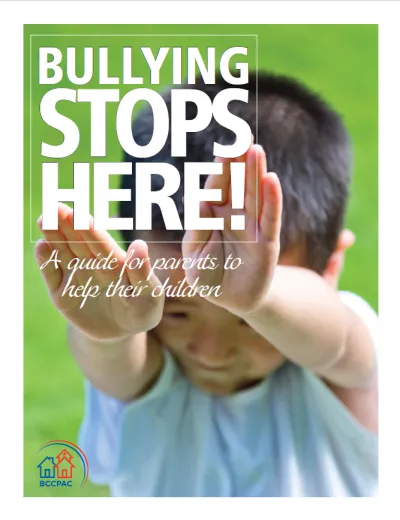Bullying is when a person behaves in a hurtful or aggressive way, again and again, in order to make others feel uncomfortable, scared or upset.
It is common, but bullying should not be a normal part of growing up. Bullying can significantly impact a young person's mental health and well-being. Parents, caregivers and educators can play an important role in intervening if bullying is suspected.
How is bullying different from mean behaviour, conflict, or teasing?
It’s important to know the difference between bullying and a single act of mean behaviour, conflict or teasing. Here is how you can tell the difference:
- Bullying is intentional and done repeatedly. The person doing the bullying means to harm or scare someone else. Bullying is done again and again.
- Mean Behaviour: Saying or doing something on purpose to hurt someone. A child or youth might make a mean comment when they feel angry, frustrated or jealous. Or, they might say something mean to make themselves look better than another person. They often make these mean comments on impulse, and then regret them later.
- Examples:
- "Your clothes are ugly."
- "Get a life."
- "You’re so fat/ugly/stupid."
- Examples:
- Conflict: A disagreement or difference between peers who have equal power. Conflict is common within groups of children or adults.
- Example:
- Two girls on the basketball team are arguing with each other about losing a game. Each girl blames the other for making a bad play. They continue to fight until their coach gets involved and tells them to stop arguing.
- In this example, both girls have equal power and are disagreeing over the outcome of a game. Neither girl has been threatened or harmed. They are not showing signs of distress or humiliation.
- Example:
- Teasing: Comments intended to make fun of someone in a playful way. Teasing usually means the person doing the teasing is good natured and being playful. The behaviour is not repeated.
- Example:
- A boy sees his friend smiling and talking to a girl. He teases him about having a crush on her and mimics their conversation. The friend tells him to let it go, and that she’s just a friend. The teasing continues for a few more minutes, but then they move on to a something else.
- Example:
Bullying is different from mean behaviour, normal conflict, or teasing. Bullies intend to hurt someone and they repeat their behaviour.
Types of Bullying:
- Cyberbullying is the use of text, social media or technology to hurt or threaten others. Examples of cyberbullying include:
- saying hurtful things about someone on social media
- sending threatening text messages
- spreading rumours online
- Social bullying is trying to embarrass someone or affect their social standing. Examples of social bullying include:
- spreading rumours
- planning hurtful jokes to embarrass someone
- coordinating with other people to leave out or exclude a person – social exclusion
- Verbal bullying is saying hurtful things that are meant to hurt or embarrass someone. Verbal bullying can happen in schools or even within friend groups. Examples include negative comments about the clothes a person wears, their race or sexual orientation.
- Physical violence is hitting, kicking, shoving, spitting, pinching, or any physical contact that is unwanted. It also includes damaging another person’s property.




